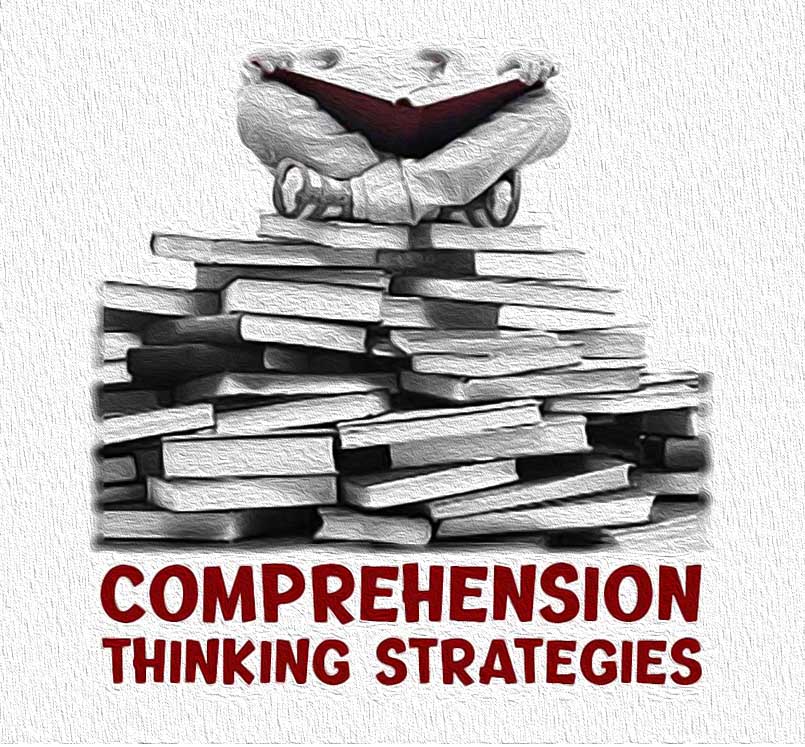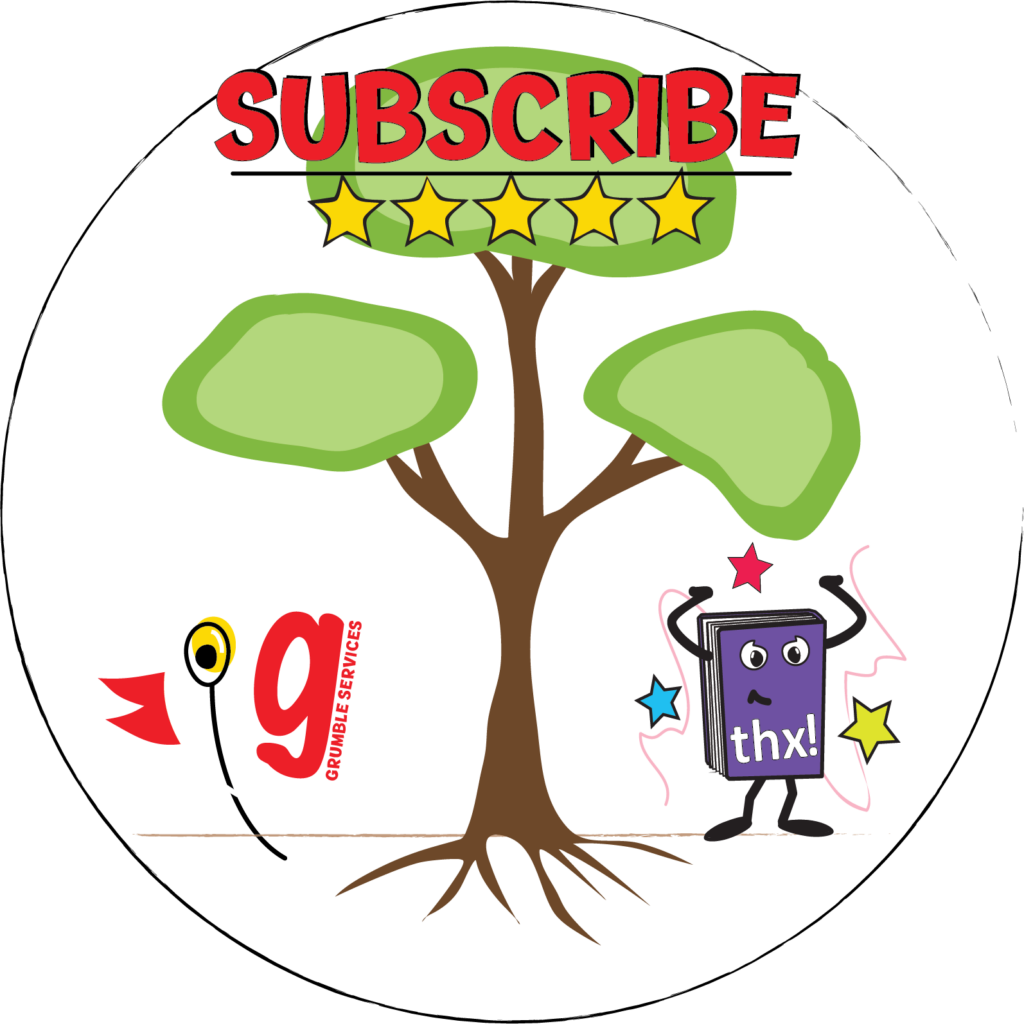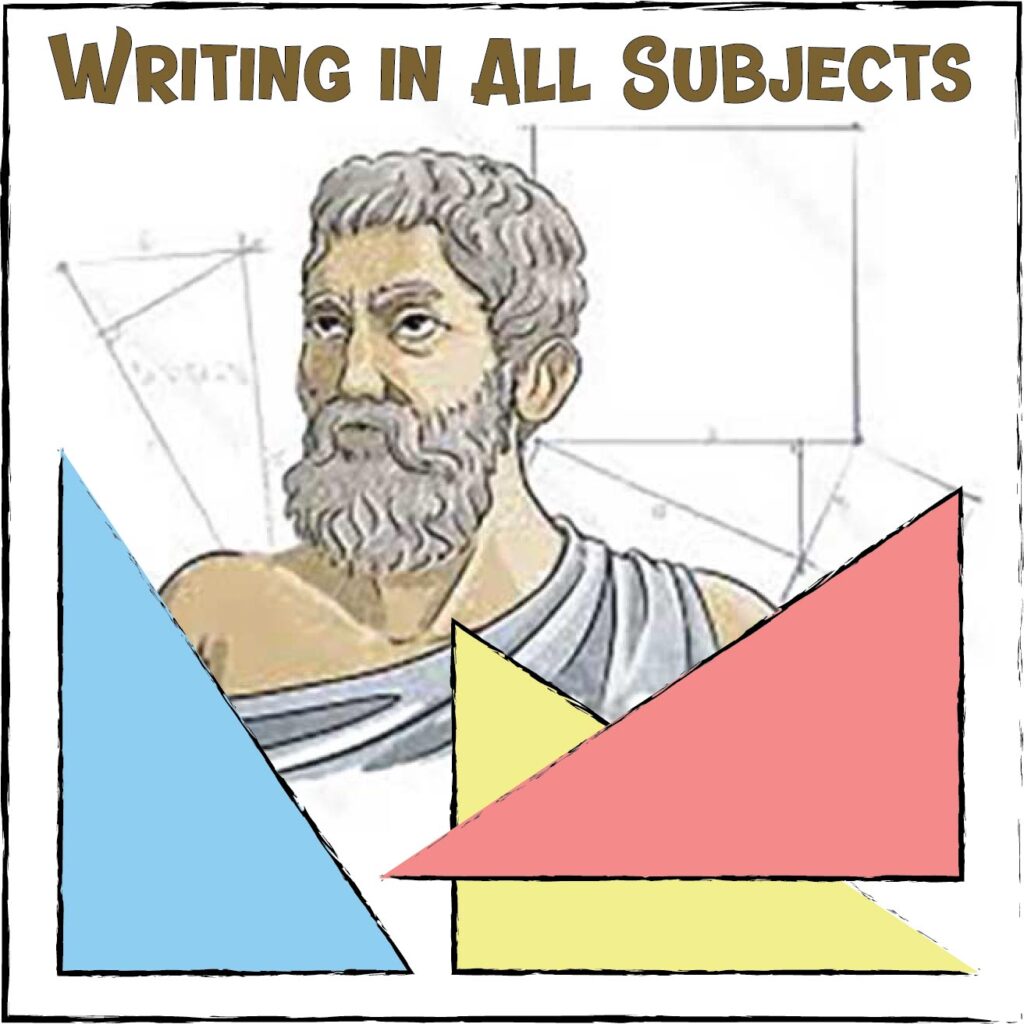Comprehension Thinking Strategies: Skilled Reading Part Two
How do We help older students
become better readers?
Comprehension Thinking Strategies: Written language is a code and children need to be taught how to decode it.
Early reading skills include phonics, word recognition, vocabulary, decoding and fluency. Proficient readers possess all these fundamental skills.
But as young readers advance, the development of comprehension skills work differently. According to current research, older readers possess distinct strategies to construct meaning before, during and after reading a text. This type of reading is referred to as “skilled reading.”

The key to skilled reading is being capable of recognizing words without relying on context at all. This is one of the most well replicated findings in all current reading research. Skilled readers have the ability to read a word in isolation instantly and accurately. How? A skilled reader will quickly recognize a word as a sequence of letters, not as a graphic image.
Skilled Reading is an Active Process
Skilled reading is an active process; the reader’s mind is constantly processing information extracted from the text. In contrast, struggling readers often unconsciously read the words on the page, detached from their meanings. For them, reading is an inactive activity. The good news is they can be taught the appropriate tools to help them learn to construct meaning from text.
Last week I discussed three topics: What current research tells us about the lack of progress American children have made over the past 20 years in reading; A popular and long-held misconception about teaching reading to struggling readers; and three ways at home or in the classroom to support a child who struggles with reading comprehension. Here is a quick overview of those three supports:
Three Ways to Support Students Who Struggle with Reading Comprehension
- Build oral vocabulary so when students see those words, they know what they mean.
Recent research reveals the difficulties in reading comprehension. They are very likely rooted in an underlying oral language weakness. This weakness exists from early childhood, before reading is even taught.
It turns out that students who have poor reading comprehension also often understand fewer spoken words and less of what they hear. Consequently, they will have worse spoken grammar. Therefore, struggling readers should be exposed to many new and level appropriate vocabulary words orally. This gives them a much better chance to understand those words when read on paper.
2. Vocabulary, vocabulary, vocabulary!
It is critical to expose young and older readers to new and level appropriate vocabulary words. Students with poor comprehension often have poor vocabulary skills and understand less of what they hear. In addition to spoken word, seeing new words on paper is the next critical step.
3. Directly teach struggling readers comprehension thinking strategies.
Students can be directly taught comprehension thinking skills such as sequencing, how to make an inference and how to draw a conclusion. They should have the opportunity to first practice comprehension skills with text they hear read aloud. Later, struggling readers should apply these skills to text they read independently and at an age appropriate level.
This week, we will look more closely at different comprehension thinking strategies available to your child at home and in the classroom.
Comprehension Thinking Strategies
There are multiple comprehension thinking strategies available to a struggling reader. Often, many or all of these strategies are working together to assist in comprehension. Teaching these strategies also requires students to assess their changing understanding of them as they use them and as their reading improves.
Here is a breakdown of the seven to which have been found most effective:
Activating:
Many researchers believe activating is the most important strategy for reading comprehension. Another term for activating is ‘background knowledge.’ When students make connections to the text they are reading, their comprehension increases.
Making connections could mean connecting to something they have seen or experienced (known as “text to self”). It could mean connecting to a topic they have previously learned about (“text to world”). Or it could mean connecting what they are reading to another text (“text to text”).
Strong readers are constantly trying to make sense out of what they read by seeing how it connects with what they already know. Helping students make those connections before, during and after they read, teaches them a critical comprehension strategy skilled readers use almost unconsciously.
Summarizing:
Summarizing means to restate the purpose and meaning of a text in one’s own words. This teaches students three things: How to extract the most important ideas communicated in a text (find “key words” and “key phrases”); how to ignore nonessential information; and how to incorporate central ideas and details that support them.
Teaching students to summarize improves their memory for what is being read.
How to Teach Summarizing:
- Begin by having the student quickly read or skim the text to be read (in a minute or two).
- Ask them to circle new vocabulary words that they haven’t seen before.
- As they get better at this, ask them to try to underline a sentence or two that could be the main ideas of the text.
- Then ask students the following framework questions:
- What words or phrases are being repeated over and over?
- What are new words you see in this text? (briefly discuss the meanings).
- Based on the key words you found, what are the main ideas in this text?
- What information do you think is irrelevant or unnecessary?
- Read the text together. Take turns reading aloud. If the reader is reluctant to do so, do not force them to read out loud. Overtime, gently encourage them to do so.
- Overtime, allow the student to ask themselves questions about the text. Questions like, “How do I say this word out loud?” or “Should I read this again because I don’t really understand?”
Monitoring & Clarifying:
Make sure the student understands the text by clarifying and correcting misunderstandings during and after reading it.
A way to accomplish this is by briefly pausing in between each paragraph. Ask the student to question whether or not they understand what they have just read. You could even have them briefly summarize that paragraph (but be careful! Pushing this too hard might discourage them from continuing on).
Over time, they will begin to question themselves while reading on their own. This strategy can only be accomplished if the reader is actively reading. Comprehension happens before, during and after reading. Therefore, readers should be monitoring and clarifying throughout the entire process.
Visualizing & Organizing:
This strategy encourages a student to create a mental image of the text. Visualizing refers to the ability to visualize or picture in one’s mind what is being read, based on the text we read or heard.
Encourage students to focus on the most important part of a story and to describe it using all their senses. Multisensory understanding makes reading a much more enjoyable experience and helps the student to better understand the text.
If students share with you an image not matching the text, they have probably misread something. Encourage them to reread the material silently and see if their images change. After rereading the text, you might even ask them to make a new drawing and compare it to their first drawing. If working in a small group, students could even compare their images with one another and discuss the differences.
Visualizing taps into background knowledge, connecting to the text and summarizing. Graphic organizers are available to help provide structure and allow students to generate ideas from the text.
Searching & Selecting:
When searching and selecting, students gather information from various resources. This allows them to define key words, answer questions, or solve problems. Wider reading and research is important. In this, students are expected to find appropriate resources and use these to develop understanding and ideas.
There are many resources useful in a student’s studies. These include: Books, encyclopedias, journals, internet and newspaper articles. Planning their search will save time and help them find the most appropriate resources.
They must also keep in mind not resource is created equally. Help them discern among finding quality resources that are fact checked and up to date. Even more, it should be explained to students they do not need to read everything selected from cover to cover.
Questioning:
Struggling readers tend not to ask questions of themselves or the text as they read. Teaching questioning techniques even to strong readers can help them to advance their comprehension further. Effective questioning should be practiced before, during, and after reading.
When readers ask questions before they read a text, they are activating prior knowledge and making predictions. Both of these activities engage the child’s interest and increase the likelihood they will connect with the text and comprehend it.
After reading last week’s blog, a teacher friend shared with me one of her observations when working with reluctant readers. That is encouraging a technique called ‘wondering.’ If you select the right text for that struggling reader, wondering can pull them in and engage them.
Questioning during reading can be a small group activity or take the form of self-questioning. Students can answer different levels of questions about the text from their peers and/or teacher. Asking questions after reading the text can stimulate critical analysis and further research on the topic.
Inferring:
Drawing inferences while reading is a more advanced comprehension skill. It also happens to be one of my favorite comprehension thinking strategies to practice with my students. When students infer, they are interpreting the text and drawing logical conclusions. These conclusions reflect what is happening in the text at that moment. Some might call this “reading between the lines.”
Struggling readers will need help to understand the difference between inferences and predictions. When students predict, they guess what will happen next based on what they already know from the text and their background knowledge. When students infer, they make a guess about what is currently happening in the text.
Students will also often need help in differentiating between inferring and stating the obvious. For example, a student looking at the picture of a child eating vegetables might say, “He is holding up a piece of broccoli on a fork.” Although this is factually true, a correct inference might include that the boy is upset or frustrated because he doesn’t like broccoli.
It is also possible for students to draw incorrect inferences. For example, if a student looked at the picture of a child eating vegetables and said “the boy is probably upset because his brother just hit him,” that would be incorrect. There is no evidence within the image to support that he was being teased or hit by a sibling.
How to Make Inferences:
There are several activities to assist students in making inferences. Help students to understand they are already making inferences in their everyday life! Any time they come to a conclusion about a specific situation, they are inferring.
An easy way to first introduce inferring is to use pictures. These pictures should lend themselves to making inferences. Ask them what is the possible inference. Then ask what evidence is there to support their response:

Possible inference: The boy’s parents are demanding he finish his vegetables so he is feeling frustrated.
Evidence: He has a plate of veggies in front of him and a scowl on his face. The student might use his/her own feelings about veggies to understand what he might be thinking.
Choosing the Appropriate
Strategies at Home
Students can be taught to successfully read a broad range of challenging and difficult texts. This is accomplished by helping them develop deeper levels of comprehension. It’s important to choose the appropriate strategies for your child depending on their needs. And remember, this is a fluid process. Those needs might change or move around in a nonlinear way.
The most effective way for students to learn comprehension skills is through direct instruction. This can be directed by a teacher in the classroom or by an adult at home. Use the strategies that work best for them depending on the text they’re reading. Pulling deeper meaning out of text through the use of thinking strategies can be beneficial not just to reading comprehension but also to writing.
Before choosing a strategy, consider these questions:
- What skill does my child need to strengthen before, during or after reading the text?
- What kind of text should I select to achieve this goal?
- Has my child experienced this type of text before?
- What part or parts of the text may challenge my child the most?
- What supports can be provided to my child (such as key words and vocabulary) before reading the text?
- How can I model the chosen strategies to my child?
Lead by Example
It has been shown that consistent and daily reading and comprehension exercises, especially when assisted by an adult, have a significant impact on individual academic progress.
Modeling a strategy (for example, thinking aloud) provides students with a clear understanding of why they were given the task and how to complete it properly. Please, spend a few minutes doing this each day with your child.
Discuss what you have both read during that day. Or you may want to spend that time reading together. They are never too old! Modeling the behaviors we want to see in our children leads them to creating the best habits. Even just 20 minutes a day makes all the difference.
Shifting our Teaching Paradigm
Much of our current education system is designed to serve students who come from homes filled with age appropriate books and consistent reading habits. It is assumed there are family members readily available with the time and resources to prioritize and model reading at home. This can be seen in many areas, from teacher preparation to reading curriculum and reading assessment.
In reality, many students do not benefit from living in homes like these. Large numbers of children, teens and adults struggle with reading. Evidence reveals there are students in almost every school district in America – and in almost every classroom – not able to do the work they’re asked to do. This is due to their reading level. Moreover, when serious reading challenges present themselves (such as dyslexia), these same families are much less likely to be able to afford the additional support needed for their child.
We need to approach reading instruction in a modern and more equitable way. This means we need to meet struggling readers where they are at, regardless of their age or background.
Do you have thoughts on Comprehension Thinking Strategies within a Montessori program? Do you have a suggestion for another blog topic? Please send me an email with your ideas or experiences at grumble.services@gmail.com.
If you find this article helpful, please share it. Or better yet, please join us if you have yet to do so. Subscribe below and receive articles like this one in your email box weekly. Thank you!
Read More: Writing Wounded: How to help struggling writers!
All Rights Reserved • © 2021 Grumble Services LLC • grumbleservices.com

References and Read More:
Teaching Students the Skill of Expert Readers
By Patricia Hilliard, Edutopia (April 2018)
Activating Prior Knowledge
by TeacherVision Staff (February 2008)
Why American Students Haven’t Gotten Better at Reading in 20 Years
by Natalie Wexler, The Atlantic (April 2018)
How to reach older struggling readers
by Christine Pitts (February, 2020)
At a Loss for Words How a flawed idea is teaching millions of kids to be poor readers
by Emily Hanford, APMReports (August 2019)
How Do Kids Learn to Read? What the Science Says
by EducationWeek by Sarah Schwartz & Sarah D. Sparks (October 2019)
40 Ways to Support Struggling Readers in Content Classrooms, Grades 6-12
Book by Elaine McEwan



